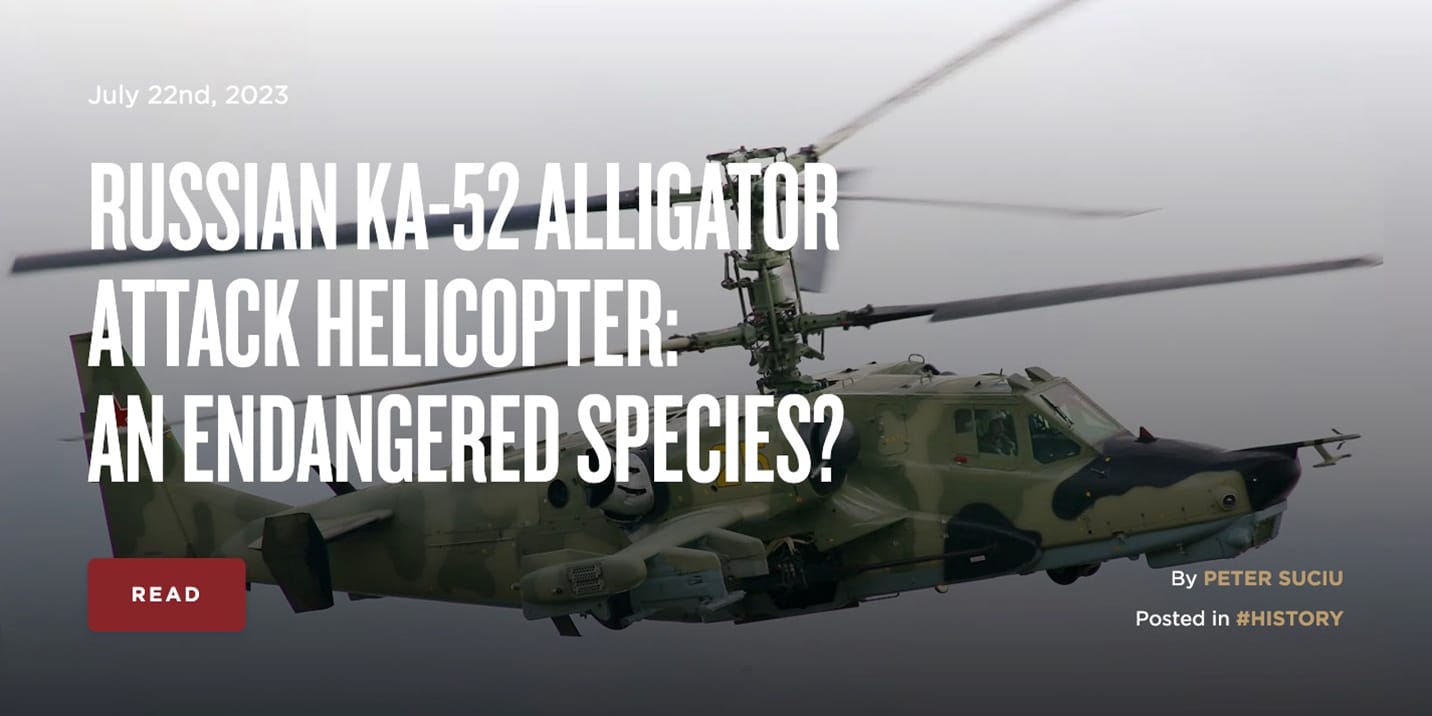Hello all, here is today's article posted on TheArmoryLife.com. It is titled “Russian Ka-52 Alligator Attack Helicopter: An Endangered Species?” and can be found at https://www.thearmorylife.com/russian-ka-52-alligator-attack-helicopter/.



They are referring to the KA-52 specifically. Its suffering some really bad losses in UkraineThe key is combined arms operations. The attack helicopter is not an endangered species; deep attack is. The only retreat of US forces during OIF was an Apache brigade when it ignored offers of supporting arms from artillery and AF assets and got shellacked by small arms and RPGs. Deep attack has been the holy grail of the Army Aviation community since the mid-80s, and frankly, it was a pipe dream from the start. Though extremely powerful weapons wise, these birds are very fragile. In a rare instance of the Army turning on a dime, days after the debacle in OIF, the vice chief of staff of the Army, an aviator himself, came out publicly and described a complete revamping of attack aviation doctrine and training and integration with ground forces. This was already being done in some units but wasn't emphasized enough.
Nothing is invincible. How an army uses available combat systems determines success or failure.
Key thought: How an army uses available combat systems determines success or failure.They are referring to the KA-52 specifically. Its suffering some really bad losses in Ukraine
Let’s see, they’re fairly slow, have the radar signature of a city bus towing another city bus and you can’t punch out of a wounded one. What could go wrong?They are referring to the KA-52 specifically. Its suffering some really bad losses in Ukraine
Pfft. Kiljoy. You can use facts to prove anything.Let’s see, they’re fairly slow, have the radar signature of a city bus towing another city bus and you can’t punch out of a wounded one. What could go wrong?

